SEO and Website Design: How to Build a Site That Ranks








Do you want your business to rank on the first page of relevant search engine results pages (SERPs)? Then you need to learn about search engine optimization (SEO) and web design, a critical duo that increases your traffic and improves user retention on your website.
When you create a site that nails SEO and website design, you make it possible for your business to rank higher in search results, which translates to more traffic, leads, and revenue.
On this page, we’re exploring all things SEO website design to help you craft a site that drives traffic and leads for your business:
- What is an SEO-friendly website design?
- Why is SEO web design important?
- 7 factors to optimize for web design and SEO
- SEO and website design FAQs
Let’s get started!
Looking for an all-in-one SEO audit tool? You’ve found it
SEO checker provides data on key metrics to give you:
- Complete SEO score
- Site Speed Analysis
- Content Grade
- and more.
What is SEO web design?
SEO web design refers to designing and developing SEO-friendly websites. An SEO-friendly website follows SEO best practices, like providing:
By practicing SEO website design, you make it easier for search engines to understand your site’s content and rank it in SERPs. SEO website design also streamlines your target audience’s journey to find your business and navigate through your website with ease.
Why is SEO web design important?
SEO and website design can have a tremendous impact on your company’s bottom line.
With SEO, you enable your prospects to find your business. Meanwhile, web design lets them have excellent user experience on your website, thus nurturing your relationship with them.
Together, these strategies can:
- Boost your brand awareness
- Grow your website traffic
- Increase your leads
- Improve conversion on your website
As a result, you grow your revenue.
7 factors to optimize for web design and SEO
Now that you understand the link between SEO and web design, let’s look at the specific aspects of your site that are affected by both and how you can optimize them for SEO website design.
7 factors to consider for an SEO-friendly website design
- Code
- Mobile friendliness
- Readability
- Quality content
- Images
- Navigation
- Website structure
1. Code
Designers have a few options when it comes to the code they use to render the major design elements of your site. Most stick to HTML and CSS — and for good reason.
While Flash sites may look cool, they are extremely difficult to optimize. Search engines struggle with crawling Flash-based websites. As a result, they don’t have great chances of ranking well in search engines.
Coding pro tip for SEO and website design
Tell your web designer to stay away from Flash, and your SEO will thank you.
2. Mobile friendliness
Fun fact: 54% of all website traffic is generated from mobile phones. That said, your website design must be responsive so that it displays properly on all devices.
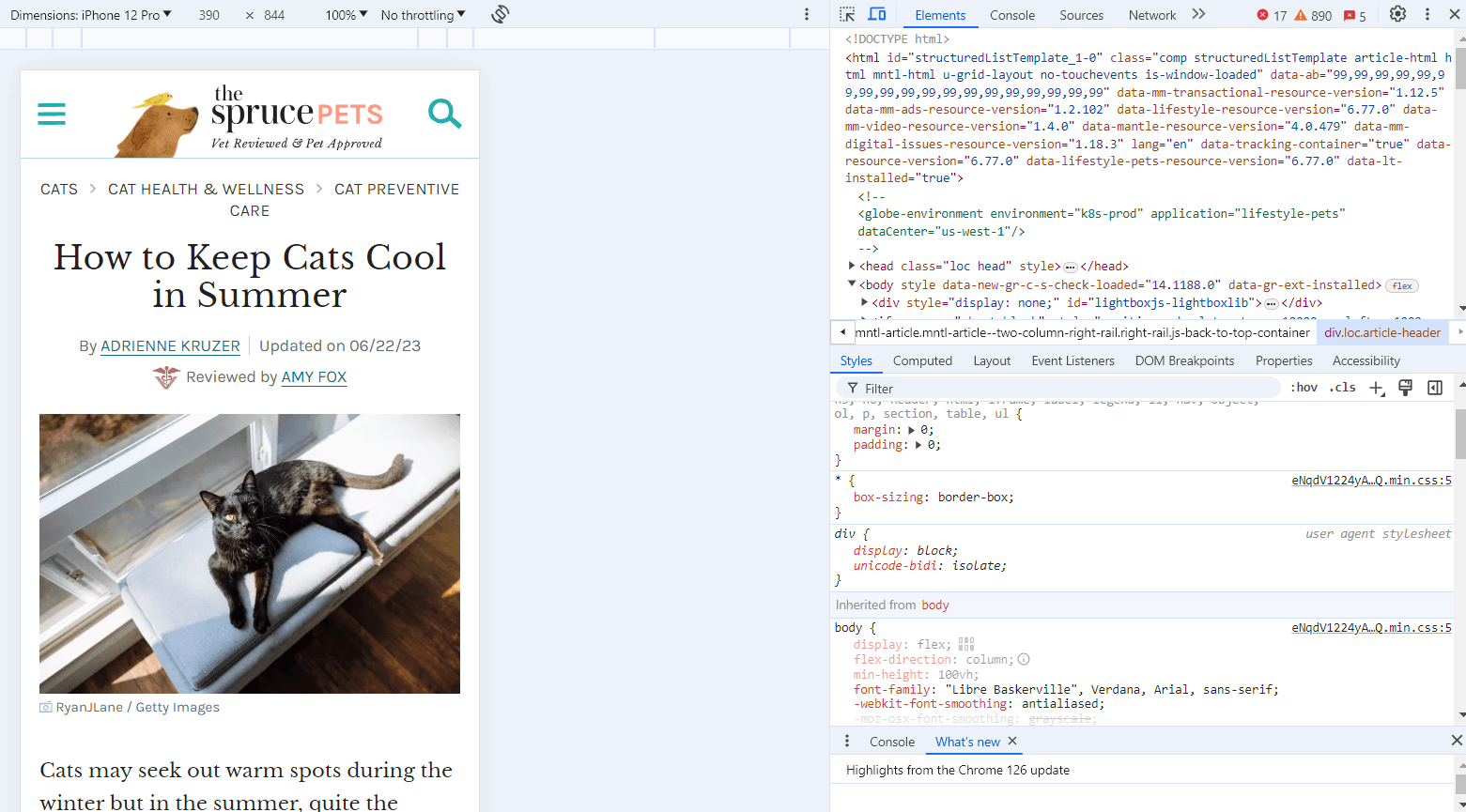
Making your website design responsive is a win for your SEO and website design. A mobile-friendly site increases your chances of ranking well in relevant search results.
That’s because the leading search engine, Google, uses mobile-first indexing. Mobile-first indexing means a search engine indexes and ranks a website based on its mobile vs. desktop version.
A responsive website design also provides visitors with an excellent user experience, letting them read your content, use your site, and fill out your web forms no matter how small their screens are.
Mobile friendliness pro tip for SEO and website design
Follow responsive web design best practices, such as making navigation simple.
3. Readability
When optimizing SEO and web design, mind your pages’ readability. This involves the combined efforts of your writers and designers.
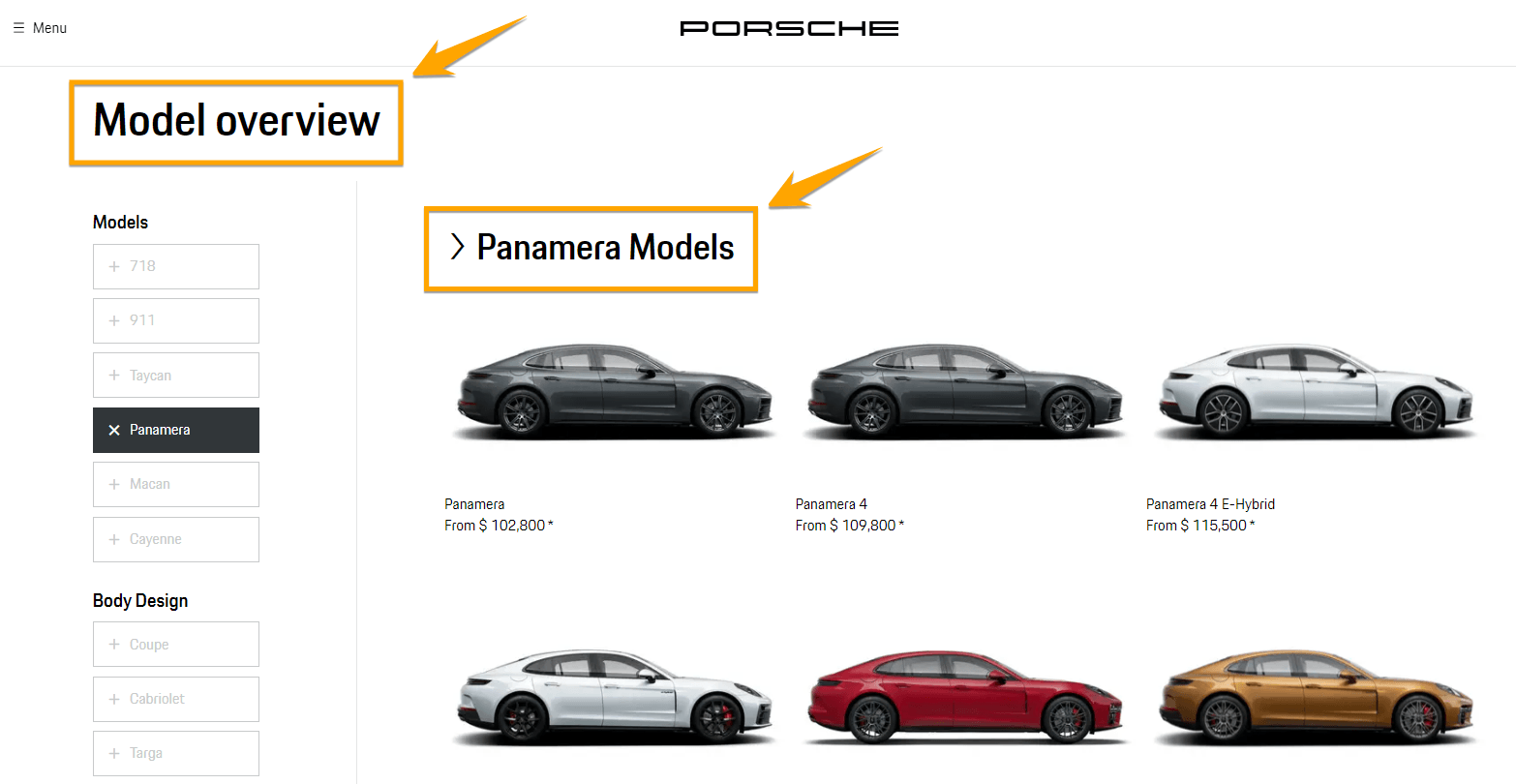
SEO writers can make content readable by writing concisely and using short paragraphs. You can also use headings, which break up your content into topics and make it easy for readers to skim through your content.
On the other hand, web designers must choose fonts and colors that are easy for your site visitors to read. They must design pages with enough white space, which guides your users to focus on important elements on the page and make content easier to read.
SEO and web design pro tips for readability
- Use headings on your pages.
- Employ white space in your website design.
4. Quality content
Search engines like Google have been refining their algorithms to ensure that they’re showing the best pages that satisfy a searcher’s intent. Google even created a set of guidelines called E-E-A-T, which says that for online users to trust your brand, you must have the following:
- Experience
- Expertise
- Authoritativeness
- Trustworthiness
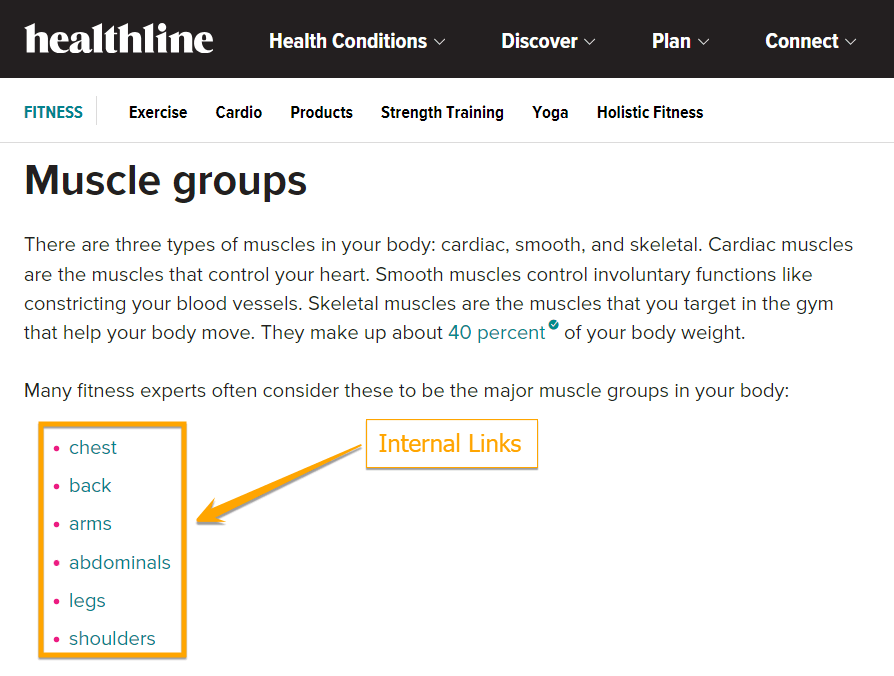
While E-E-A-T is not a ranking factor, following these guidelines will improve your content and increase its chances of ranking.
Quality content pro tips for SEO website design
- Create helpful content for your audience.
- Include internal links to relevant and useful resources for your reader.
- Employ user-friendly navigation and web design for your visitors.
5. Images
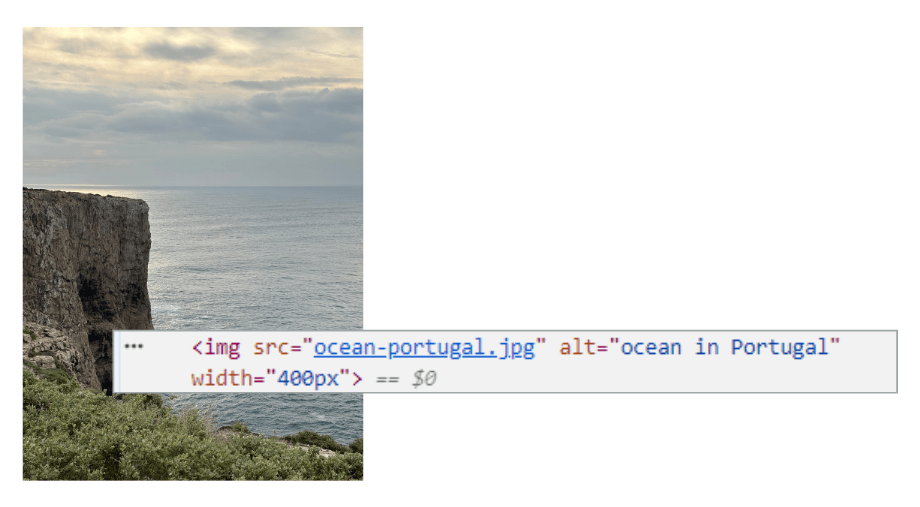
Aside from your content, your images must also be optimized for SEO and web design. Use high-quality images that will complement your content.
Here are things you must mind:
- File size: Compress your images, as large files can slow down page load times, which can hurt your rankings.
- Filename: Use descriptive, logical filenames. It requires a little more work than simply leaving them with names like “IMG_0035.jpg”, this will help search engines “see” your images and put them into context.
- Alt tag: Your images should also have optimized alt tags. These descriptions help search engines determine what is being depicted, and users can read it when they mouse over an image. They also help visually impaired users (and users whose browsers do not support your files) understand what is being shown.
SEO-friendly web design tip
Employ image SEO best practices.
6. Navigation
Navigation is one of the most important components of a great user experience, and because of that, you should keep it simple. The easier it is for your site visitors to find what they need, the more likely they’ll convert.
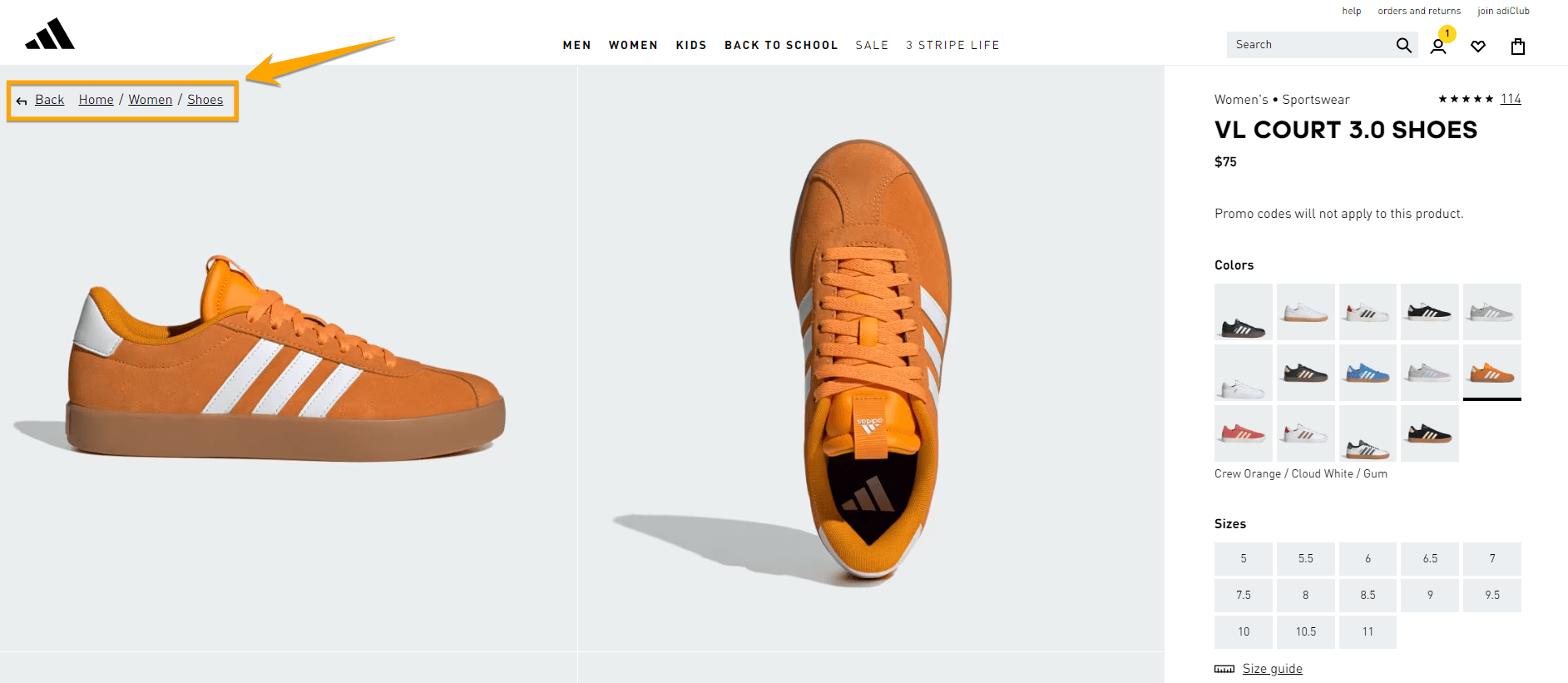
Easy-to-use navigation also lowers the chances that your visitors will get confused and leave your site, which can lower your bounce rate and improve your rankings.
SEO-friendly website design tip
Use breadcrumb navigation to guide your users on your site
7. Website structure
Imagine you’re at the grocery store to buy laundry soap. You’d usually find all the different types and brands of laundry soaps in one aisle to make it easy for you to compare them and choose one from the rack.
A website must be as organized as this grocery store, too, because an excellent website structure makes navigating it easy for your users.
Search engine crawlers can also better understand your pages and how they’re related when you have a well-structured site. In addition, your URL structure will be easier to understand.
SEO and website design pro tip
Use relevant keywords and terms for your pages.
FAQs about web design and SEO
Get answers to common questions about website design and SEO:
How are web design and SEO related?
The goal of both SEO and website design is to provide users with a great experience.
So while designers are focused on the aesthetic components of a site and SEO professionals think about the aspects that help sites rank well in search engines, the desired result is the same: A site that gives visitors what they want and helps a business grow its revenue.
To provide your visitors with the information they need, your site needs to be both functional and visually appealing, two qualities that a good designer must achieve. It also needs to be easy for potential customers to find, which is the responsibility of an SEO.
Which one is more important: SEO or website design?
Many site owners think that great design can outweigh bad SEO, or vice versa, and want to know which is more important. However, the answer is neither.
To put it simply, a strong SEO is what draws users to your site, and great design is what keeps them there.
Having a beautiful site is useless if no one sees it, and having a site that ranks at the top of search engines won’t help you if your poor design makes visitors leave (which, in turn, will hurt your rankings).
How can I practice SEO website design for my business?
Because web design and SEO are so closely related, you need to make sure that they work well with one another. That’s why the all-too-common process of hiring a designer to lay out and create a site, then bringing in an SEO as an afterthought, must be avoided at all costs.
Both a designer and SEO must be involved during the early stages of your project. This will help the designer create a site architecture that is SEO-friendly and will also provide an opportunity for your SEO to see the intricacies of your site design.
You may think that the best way to ensure that your design and optimization work well together is to hire one individual who does both web design and SEO — but if that’s what you’re considering, be very careful. Those are two distinct fields, and it’s better to hire separate people who are great at each than one person who is mediocre at both.
A better solution is to hire a full-service Internet marketing agency. By allowing an established team of designers, developers, and SEOs to work together on your site, you can be sure not only that the final result will be cohesive, but that each aspect is done by a specialized professional.
Make SEO and website design a success for your site
The relationship between web design and SEO is a complex one, but we hope that this page helped make it a little clearer. If you have any questions about how your site does at combining the two, or if you are considering starting a design or redesign project, WebFX can help.
Our SEO website design company’s award-winning team of designers, developers, and SEOs is more than happy to assist you create a site that is both functional and visually appealing. We’ve produced more than 1,058 sites and have helped our clients earn over $10 billion in revenue in the past five years!
Contact us online or give us a ring at 888-601-5359 to learn more about our SEO plans and website design services!
Related Resources
- Types of SEO
- User-Friendly SEO
- UX and SEO
- Ways to Keep Website Visitors Coming Back
- Website Optimization Checklist: Your Go-To Guide to SEO
- What Are Google Penalties and What Do They Mean?
- What Are Vanity URLs, and How Do You Create One?
- What Happens when You Stop SEO?
- What is an SEO Landing Page and How Do You Optimize One?
- What is Spam Score? (+ Best Practices to Lower Spam Score)
Marketing Tips for Niche Industries
- Top-of-the-Line SEO Services for Health Insurance Companies
- Tourism SEO: 3 Tips for Getting Started
- Turn Online Searches into Sales with SEO for Flooring Companies
- Urgent Care SEO & SEO Services
- Why Long-Tail Keywords Are Important for Electricians
- Why SEO for Museums Matters
- Why Your Grocery Store Needs SEO
- Your Guide to Long Tail Keywords for Dentists
- Your Intro to Digital Marketing for Metal Fabricators


